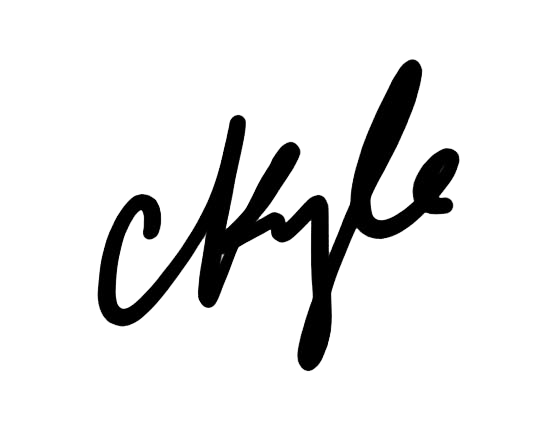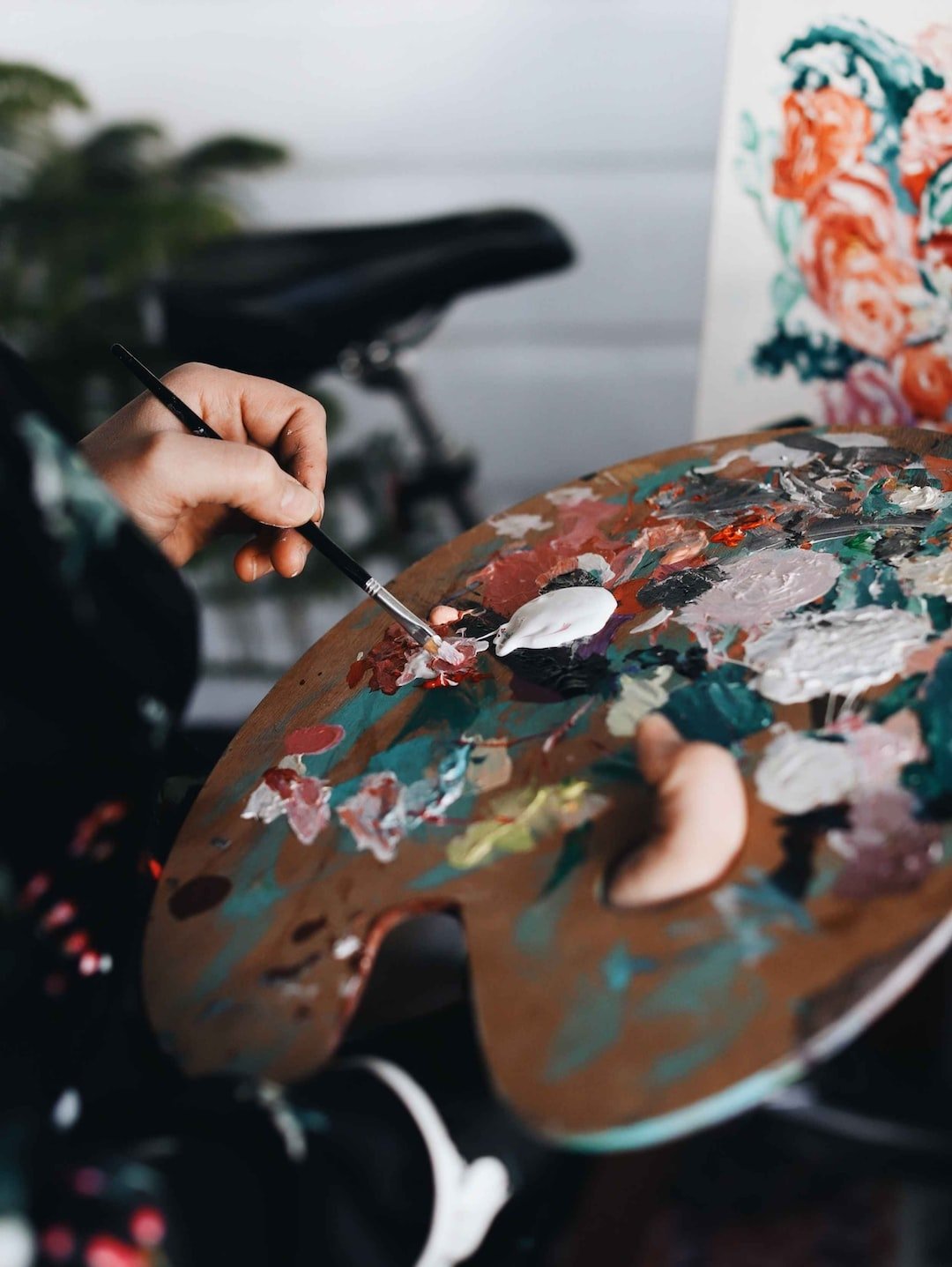The Art of Surrender
Finding time to do creative work is one thing, but committing to the work once you’re there in front of your blank canvas is another.
Throughougt my life I’ve had times where I found it easier and times where I found it harder to create do creative work. Sometimes I show up to a blank canvas and know exactly what I want to channel; other times its less clear, or maybe I’m not feeling as motivated about the work that day.
Today I want to talk about a little mantra I keep in mind: “Surrender to your art.”
The word surrender means to “stop resisting an authoritative or powerful influence”.
Often I think of the state of art itself to be like a cosmic river of energy that is flowing around us always. And I think creative people recognize that its our job to help channel some of that creative flow into reality itself. We create from that flow, from that state; we channel that energy into our works.
But often we find ourselves resisting the need to go down to the banks of that flow. We buy into beliefs that maybe it isn’t for us, or think we couldn’t possibly channel thatenergy, or we feel that we need more time, tools, or space in order to do the work. But the flow itself comes with no judgements, no resistance—it is always present and available. It doesn’t really care if you surrender to it or not, but it is always there for you when you’re ready.
Surrender to your art
Imagine you are engaging in the creative activities that bring you joy—you’re finally creating, sculpting, painting, making, sewing, cooking, machining the things that you feel are within you to create.
Imagine you are able to arrive to your creative work feeling ready, and that its easy for you to pick up your tools and start working.
Imagine that time isn’t a worry, you’ve got enough to work on what you need now and you still have time to spend with your family or to do whatever other things are important to you.
Photo by tabitha turner on Unsplash
Zoom out from that moment and imagine what led you there, how did you shape your day around time to create? How have you arranged your time so that you can move from your creative work into other things during the day?
Often we imagine that we need more space, time, tools, or inspiration in order to create. But it isn’t an abundance of these things that enable us to deliver creative outputs—its our ability to control them that enables us to deliver.
When I think of Surrendering to the act of art and creativity—I imagine a day that is planned so that I, as an artist, will have 1 to 2 hours to give in, to surrender, to the creative flow.
The most important thing I can do during my not-being-an-artist time is to set the stage for that 1 or 2 hour period to be successful.
Conditions of Surrender
The conditions of surrender are boundaries you create for yourself that enable you to surrender to the creative flow.
Time
All of us are busy. We have full time jobs, children to look after, dogs to walk, cats to take to and from the vet, family members to visit or care for. We have social events to attend, holiday plans and so on. Life simply gives us a lot to juggle.
I’m not going to pitch to you a magic routine or suggest you change your entire schedule, but I am going to suggest that you look at how and where you spend your time and see if there are any gaps—even if its just one or two hours during the week—where you can dip in to the creative flow.
It could be early morning hours just after you wake up. For me—I love writing first thing in the morning, as I’m having my morning coffee. I write for 30-45 minutes and then I hit save and carry on with my day.
It could be that instead of finding time for just yourself, you make it a point to plan a creative activity with friends and commit to going to a creative workshop or class.
Your time is the most valuable thing that you can trade, but the creative spirit rewards those small sacrifices of time.
Commitment
Once you’ve found a spot or two of time in your week, commit to arriving to that time with a readiness to create or make or do the thing—whatever is in your heart. Treat it like you’re showing up to a super important appointment, prepare as you would for that. These moments deserve to be treated with respect.
If you haven’t been arriving to your creative time much lately, then think of it like going to play a sport with a new group of people—the first few times might be a little awkward and slow-going as you sharpen your technique and get used to using your equipment; but over time, if you regularly show up, your performance will improve. Art is as much of a practice as anything else.
Space
The spirit of art can take any form, and the form of your art determines the type of space you need to be in in order to create. Form follows function.
If you are a sculptor, you’ll need a workshop space with tools to hand; if you are a painter, you’ll need a space where you can set up a canvas and splash a little paint without worrying about the mess; if you like journalling and writing, then you might need quiet and stillness in order to get into your work.
If you don’t have space for your work, then the first acts—the first few ‘practices’ you attend could be committed to setting up that space. For me, recently, this looks like using most of my free time to finish my home renovation project so I optimize my environment for creativity—I have 185 paintings to finish, and having my studio set back up will make doing that work much easier!
The time that I spend renovating and putting the final touches on my space is time that I would otherwise spend doing art; and it is the sacrifice I make now knowing that the reward will be an environment that supports my creativity.
Tools
I once had a teacher say “you’re only as good as your tools,” and then proceeded to try and encourage a group of students living on low incomes to buy the most expensive paints, pigments and canvases for our work. I remember the sting I felt when he said that, because we don’t always have access to the best tools but that doesn’t mean we’re not doing the best we can.
When starting out on any new creative activity it will be tempting to arm yourself with the latest and greatest tools—but I think its important to get to brass tacks, to work from the foundation of your creativity and let you tools build up around you over time based on your own needs rather than someone else’s prescription.
If you’re starting with no tools at all, or if you’re starting with a limited set, then first think about the thing you want to make or produce—what does the final outcome look like? Imagine it. And let that be your guide. You needn’t over-complicate your tools. And frankly it can be intimidating to face a wall of tools you don’t know how to use—so just try picking up one or two new things at a time, especially if you’re starting an entirely new creative endeavor. Then once you’ve established a level of comfort with your first wave of tools, then you’ll know what to get next.
Focus
People think focus means saying yes to the thing you’ve got to focus on. But that’s not what it means at all. It means saying no to the hundred other good ideas that there are. You have to pick carefully. I’m actually as proud of the things we haven’t done as the things I have done. Innovation is saying ‘no’ to 1,000 things.
—Steve Jobs
This quote from Steve Jobs sums up everything I’ve learned about applying focus to any activity. Focus itself is an output of sacrifice—in order to find time to meaningfully focus on something you will need to make some sacrifices. Again, the time it takes to dip into your creative flow is time that you’ll have to manage.
I’ve touched on Time and Commitment, but Focus means you’re making a conscious decision to use that committed time to turn your attention to the creative work you’re engaging in. It will mean saying no to the something else—maybe it means saying “no” to watching television one or two nights of the week, or maybe it means saying “no” to scrolling on your phone.
Surrender
All of your efforts in creating the time and space to work, and in picking up the tools you need to get started, leads to the gift of the moment itself when you can start creating something—to the moment when you can surrender to your art.
I’ve mentioned how I imagine creativity itself as if it is a constant river of energy that flows around us always—now its your turn to dip your toes in to that creative flow.
Whatever the creative activity that you’re engaging in, it is a gift and an honor that you have the opportunity to participate in the moment. The moment itself is a gift. The fact you’ve opened the door to creativity is a gift. Enjoy the moment, see what comes to you.
It took me a long time to learn what kind of structure I needed around my art in order to show up and do the art. But over time I found that I was doing all of the things mentioned above — finding time, committing to it, rounding up just enough tools to do something whether its journaling, writing, sketching, painting and then once the moment arises I commit; I surrender.
I’ve also learned over time that creative activity isn’t something I can stick to for several hours on end, my space for creativity is typically anywhere from 30 minutes to 1hr 30 minutes; but it might be different for you.
Whatever creative activity attracts you the most, I hope you’ll give yourself the gift of surrendering to it from time to time.
If you’ve read this far, thank you. I appreciate you being here, it means a lot.
This post was originally published on Substack, you can hop over there to leave comments.

